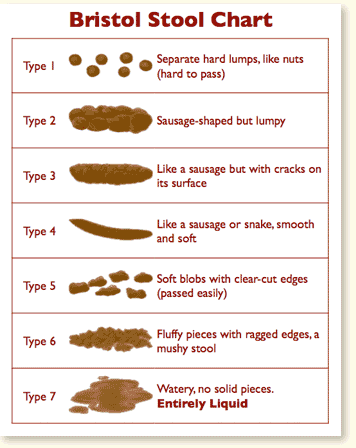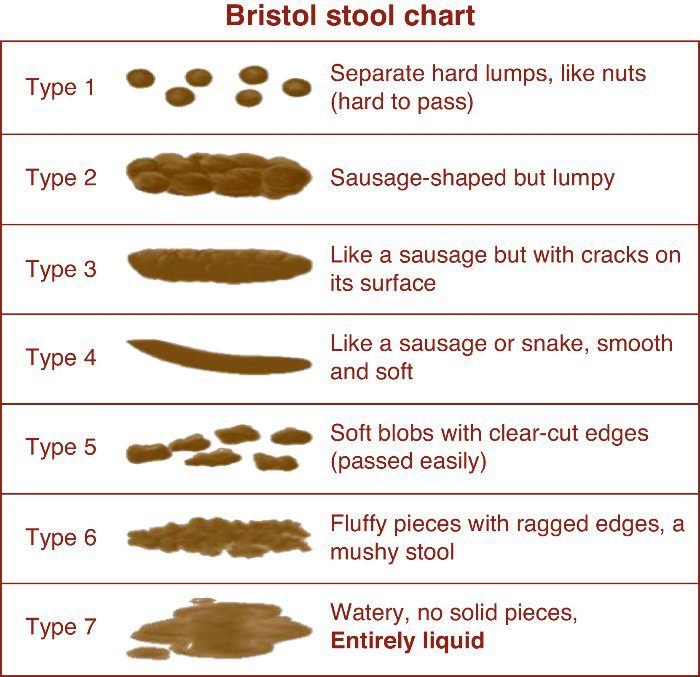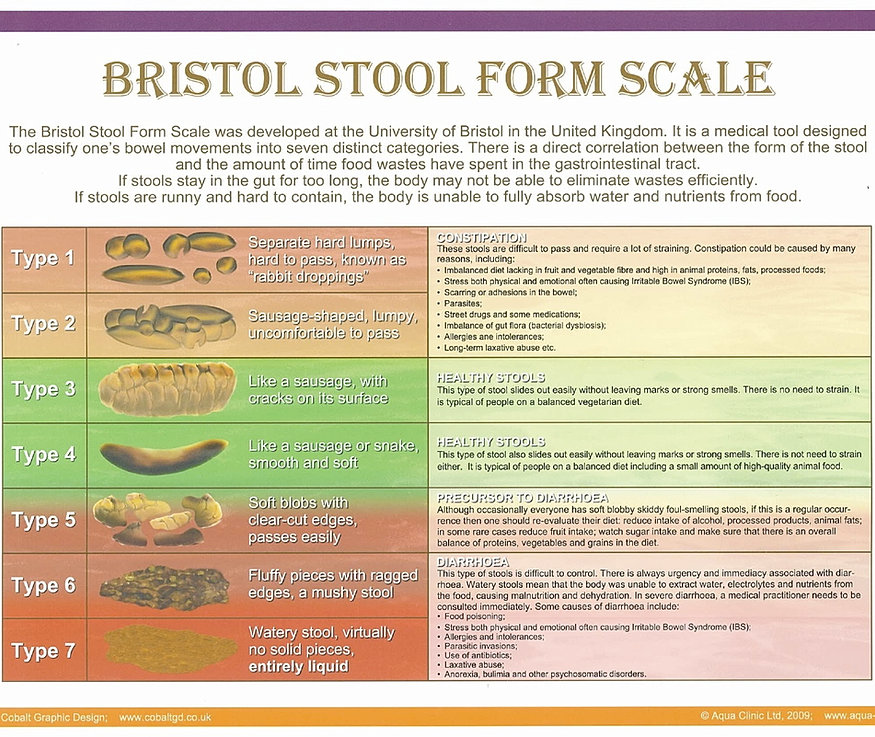Bristol stool scale
The Bristol Stool Scale ( Bristol Stool Scale english, also Bristol Stool Chart ) is a table overview of shape and texture of human chair. It was developed by Heaton and Lewis of the University of Bristol and proposed as a diagnostic tool to assess the duration of intestinal transit may, in turn, can point to a number of diseases. It was published in 1997 in the Scandinavian Journal of Gastroenterology.
After the Bristol Stool Scale seven chair types are distinguished, with the passage time of type 1 ( up to 100 hours ) decreases to type 7 ( about 10 hours):
- Type 1: Single, solid beads, difficult to excrete
- Type 2: Sausage -like, lumpy
- Type 3: sausage -like surface with cracking
- Type 4: sausage -like with a smooth surface
- Individual easily excrete soft, smooth-edged lumps, : type 5
- Type 6: The soft nodules with irregular border
- Type 7: Liquid, no solid pieces
The types 1 and 2 indicate constipation, types 5-7 to diarrhea. The types 3 and 4 are considered to be "ideal chair ", which is easily excrete and indicating any disease.










